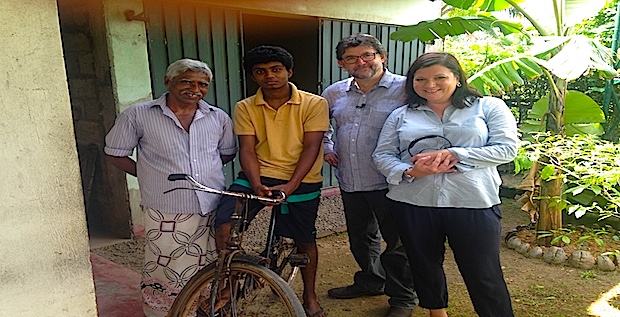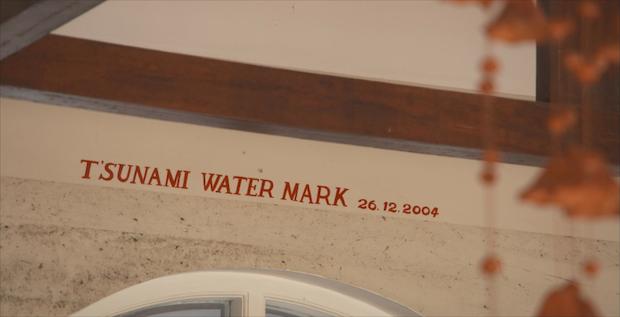-
Share this story
The Teardrop of India - 28.12.14

The island of Sri Lanka is shaped like a teardrop. And countless tears have been shed here.
For a country already plagued by civil war, the tsunami had a particularly devastating impact. Three quarters of the island's coastline was destroyed, thirty five thousand people were killed and a further five thousand have never been found. Hundreds of thousands lost members of their family, their homes and their livelihoods.
Many believed a natural disaster of such magnitude would bring an end to the animosities between the Tamils and the Sinhalese. Human suffering was surely at an all time high for so many. But it was not to be.
A little more than a year after the waves struck the fighting resumed, rehabilitation and reconstruction work was seriously slowed as a result. The vicious conflict did not come to an end until 2009, when the Sri Lankan military defeated the Tamil Tigers.
It has not been an easy decade for Sri Lanka. In Colombo, you can feel change and progression. Grand colonial buildings built during the British Empire are now shadowed by high rise skyscrapers. Three wheel tuk tuks now weave around shiny new vehicles.
Street hawkers balancing goods on their heads collide with suited and booted executives on their way to the office.
There is a new and efficient express way from Colombo to the South, but we took the old road. The express way takes tourists in the fast lane through cleared forest and deposits of them in one of the many new five star hotels lining the Southern shores of the island.
They would not see the houses and buildings that remain empty and water stained, crumbling yet defiantly reminding you of the power of the waves that swept through towns and villages.
We stopped to take some shots of such houses in Perilya. This is where at least one thousand two hundred people died on a train as the tsunami hit.
Here, I met a man with broken English and broken sandals. He was drunk. He told me his entire family were killed by the tsunami.
I watched him shuffle around the deserted buildings in the baking sun and wondered whether he has done this same routine for a decade.
There are plenty of people still outwardly mourning in Sri Lanka. This is not surprising as almost everyone we met had suffered a loss or had a story of remarkable survival to tell.
Many buildings have a painted line where the water reached, simple graves are lined up beside the seafront. Unless you are looking, it is only these little things that tell you what horror this island faced ten years ago. As you gaze out on picture perfect golden sands, the turquoise waters gently lapping the shore, you cannot fathom the terror and destruction the ocean caused on Boxing Day 2004.

However, this tragic history has not deterred tourists from holidaying on this island.
As new hotels spring up across the coast more and more visitors are flocking here, making tourism one of the main sources of income in the country. The majority of Sri Lankans I spoke to think this is something to be celebrated. Even in villages that were once small fishing ports the local people welcome the influx of visitors.
The people of Sri Lanka deserve credit for the island's popularity and their unfaltering welcome. They have seen and witnessed things most of us can scarcely imagine, and yet they remain positive and grateful for what they have.
If Thailand is the land of smiles, they have some stiff competition in Sri Lanka where a scarred but incredibly resilient population have turned the teardrop around.


